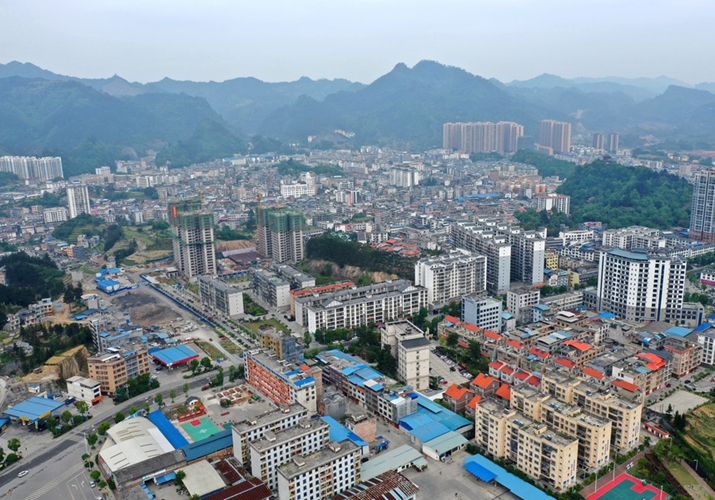A priority for progress: New urbanization drive puts people at the fore

Aerial photo taken on April 30, 2020 shows a view of the urban area of Nandan County in Guangxi Zhuang Autonomous Region, south China [Xinhua]
One of the focuses of the annual meetings of the National People's Congress, the national legislature, and the National Committee of the Chinese People's Political Consultative Conference, the top political advisory body, is the 14th Five-Year Plan (2021-25) and the long-range objectives through the year 2035. Urbanization is an essential part of this focus as it is directly connected with the balanced development of different regions.
To boost urbanization, a national plan for a new type of urbanization was released in 2014, stressing efficient use of resources and eco-friendly, harmonious development.
Last year was the deadline for implementing the plan and according to the National Bureau of Statistics, by the end of 2020, over 60 percent of the permanent population were living in cities, 6.3 percentage points higher than the figure in 2014.
The urbanization drive has stimulated the development of urban public facilities, real estate, education, healthcare and transport. The expansion of cities has led to the emergence of city clusters, such as the Beijing-Tianjin-Hebei region, the Yangtze River Delta and the Pearl River Delta, which have become major growth poles of the national economy.
However, while these regions have developed rapidly, the central and western regions still lag behind. So the focus now is to address this imbalance in the urbanization process.
The pace and quality of the new urbanization need to be higher also because it is linked to the new development model of dual circulation. Put forward by President Xi Jinping in October 2020, this is a growth vision in which the domestic market is the mainstay, with the domestic and overseas markets reinforcing each other.
The current low consumption by urban residents is a major bottleneck for domestic circulation, and new urbanization can provide the impetus to overcome it. With China's 1.4-billion population, urbanization has great potential for boosting domestic demand.
The new targets for social and economic development laid out in the 14th Five-Year Plan and beyond therefore give priority to new urbanization, which is closely connected with economic growth, social progress and people's wellbeing, essential elements in China's modernization.
The views don't necessarily reflect those of Qiushi Journal.
























